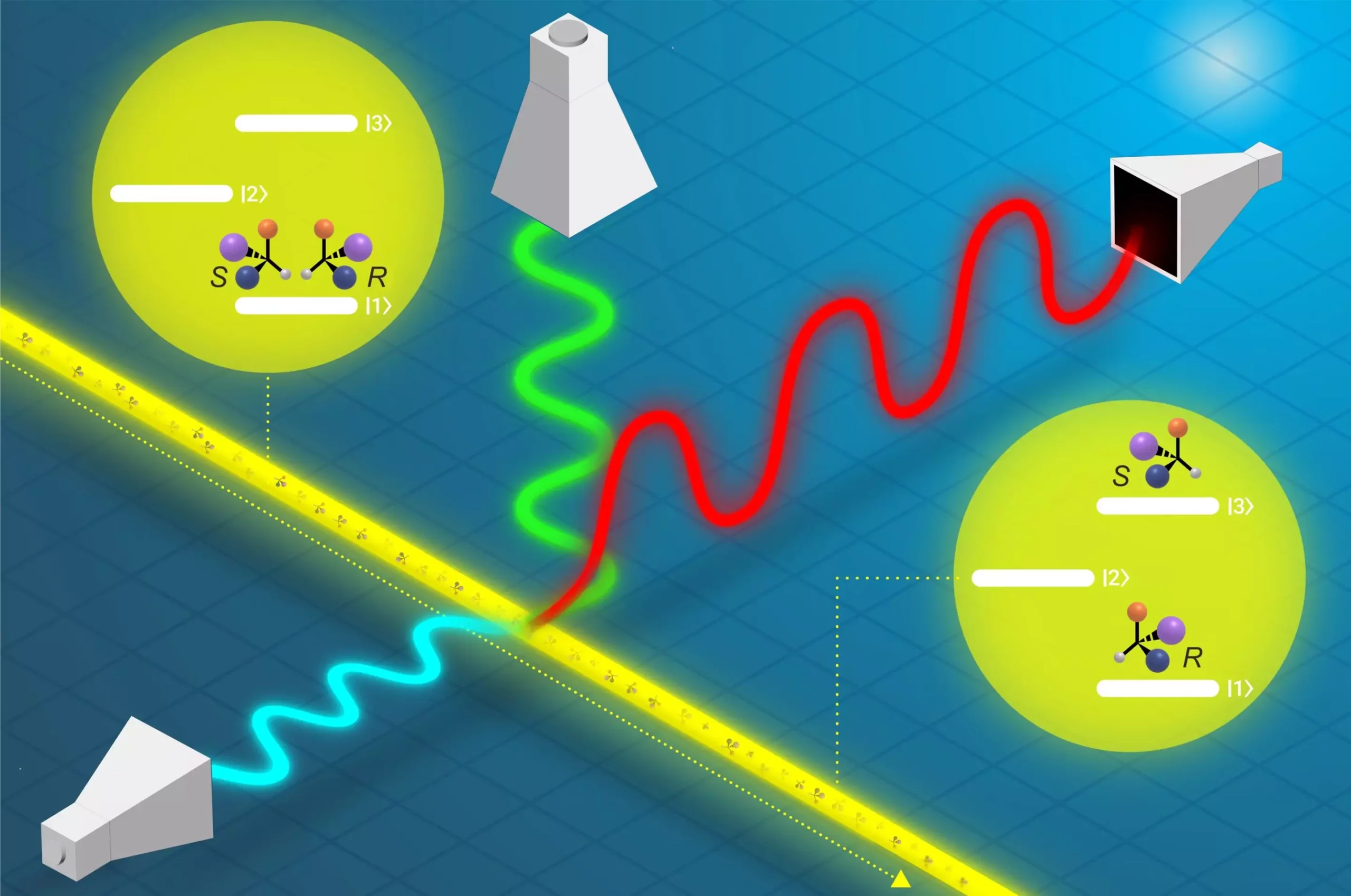A recent study titled “Near-complete chiral selection in rotational quantum states” published in Nature Communications by the Controlled Molecules Group at the Fritz Haber Institute has made substantial progress in the field of chiral molecules. Led by Dr. Sandra Eibenberger-Arias, the team achieved near-complete separation in quantum states for these crucial components of life. This discovery challenges previous assumptions about the limits of quantum state control of chiral molecules and opens up new avenues for research in molecular physics and beyond.
Chiral molecules, which exist as two non-superimposable mirror image versions known as enantiomers, play a fundamental role in the structure of life. Similar to our left and right hands, the ability to control these molecules and their quantum states has profound implications. From spatial separation of enantiomers in the gas phase to investigating the origins of life’s homochirality, the preference for one mirror image over the other in biological systems, the study of chiral molecules is essential in various scientific disciplines.
The team at the Fritz Haber Institute achieved a 96% purity in the quantum state of one enantiomer, marking a significant advancement towards the goal of 100% selectivity. By utilizing tailored microwave fields along with ultraviolet radiation, the researchers were able to exert unprecedented control over the molecules. Their experiment involved a beam of molecules moving through three interaction regions where they were exposed to resonant UV and microwave radiation, resulting in nearly exclusive rotational quantum states of the selected enantiomer.
This breakthrough has opened up new avenues for studying fundamental physics and chemistry effects involving chiral molecules. The team’s method provides a new approach to exploring parity violation in chiral molecules, a phenomenon predicted by theory but not yet observed experimentally. This discovery could have far-reaching implications for our understanding of fundamental (a)symmetries in the universe.
The study demonstrates that nearly complete, enantiomer-specific state transfer is achievable and can be applied to a wide range of chiral molecules. This breakthrough is expected to create new opportunities in molecular physics, leading to innovative research directions and potential applications in the field. By challenging previous assumptions and pushing the boundaries of quantum state control in chiral molecules, this study has laid the foundation for future advancements in molecular physics research.


Leave a Reply